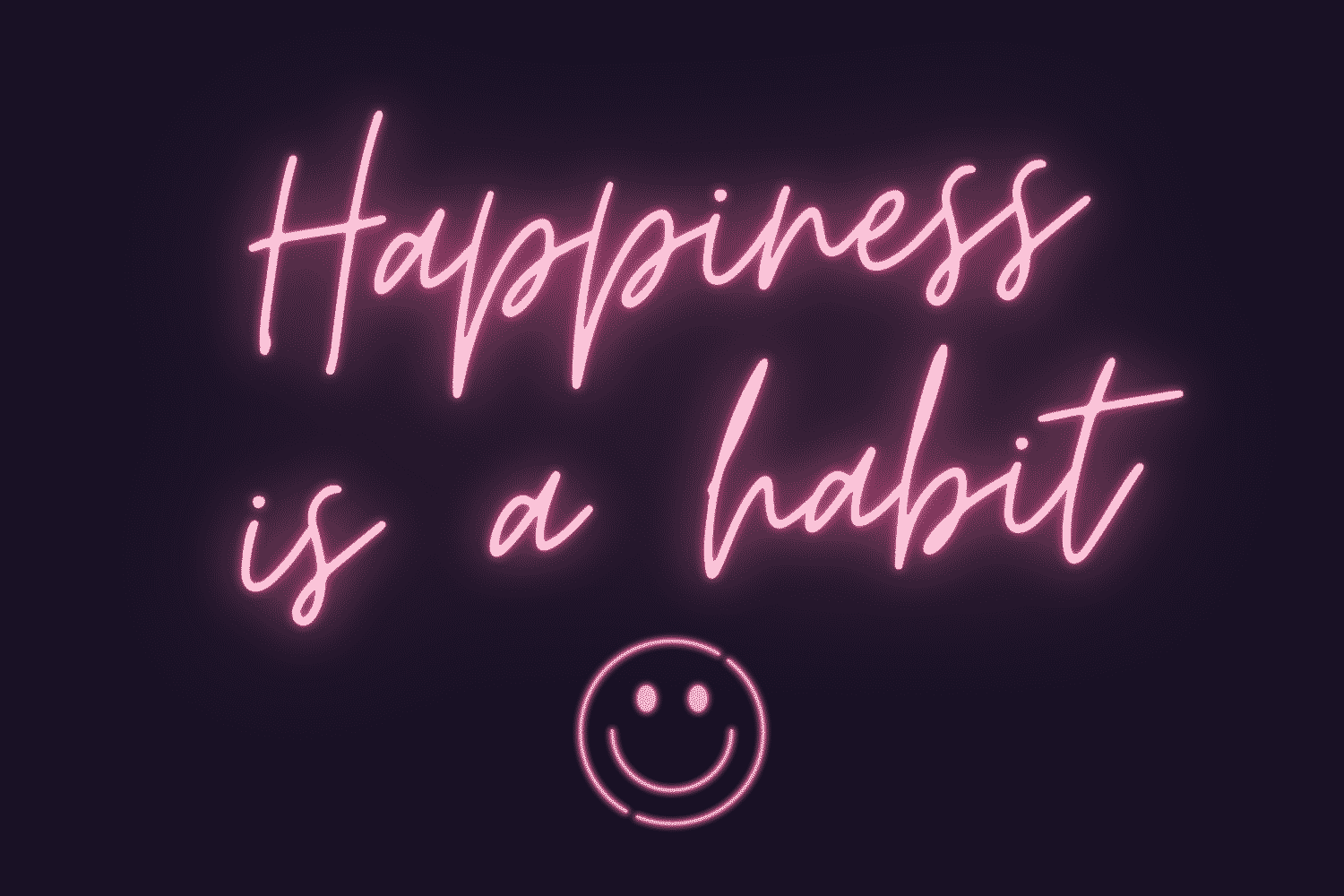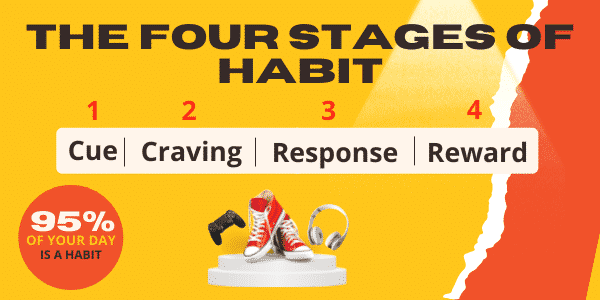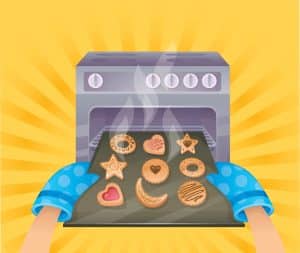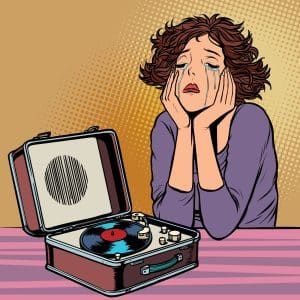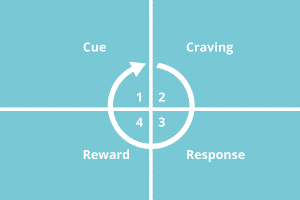Your habits determine your reality.
Choose to worry habitually, and you become a worrisome person.
Always take action, and you become someone who gets stuff done.
Who you are is a function of your habitual thought patterns, the emotions you feel, and the daily actions you take.
“If you want to create change in your life you must start by looking at these habits.”
This article will cover habits and how you can modify them to best serve you in creating the life you desire.
Habit Formation
A straightforward and consistent framework forms habits.
This consists of four stages to give you clarity and direction to better understand your habits.
Once you understand habits and how they are formed, they truly put you in the driver’s seat for changing the habits but no longer serve you.
Let’s break down each of the four stages and kick-start your habit changes.
1. Cue
A cue serves as a reminder or a trigger for specific behavior.
The smell of shortbread cookies reminds you of your grandmother.
Or even better, the sound of a song that reminds you of your ex-boyfriend.
“Triggers initiate the habit loop and although it’s hard to change triggers, we can remove them from our environment.”
If you want to stop drinking but have a table with all your alcohol bottles on it right, these cues will make stopping this habit much more challenging.
Start identifying your habits by reflecting on triggers activated through all five of your senses.
Start with sight and think about the things you see that trigger a specific craving or behavior.
Next, move on to what you smell, hear, taste, and feel.
The first step in creating habit change is to identify your cues and your triggers.
Let’s look into the cravings these cues create.
2. Craving
Your craving is your desire, motivation, and the reason you take action.
Cravings are very powerful because they are fed by the power of emotions.
“Every craving we have is formed based on our desire to feel differently.”
- You meditate because you want to feel relaxed and feel more spiritual.
- You go for a walk because you want to feel healthier.
- You check your social media because you want to feel connected.
Cravings create the meaning and interpretation we offer our cues.
You and I could hear the same song or cue, and both have a different craving in response to it.
Cravings are a newer piece of the habit formation puzzle not recognized by previous leaders in the field of habit formation.
Let’s talk about what happens after your craving has initiated your desire to act.
3. Response
Your response can be in the form of a thought or an action.
The sound of an ambulance might make you think of your friends in the area.
An ambulance sound might also make you immediately run to the window.
“We all have a unique response to the cues in our environment.”
Our responses are a learned pattern based on our previous responses to the same cues.
Your response is dictated by the intensity of your craving and your ability actually to perform the desired behavior.
The behavior will form if your craving is intense and your ability is there.
Responses don’t happen when you’re craving is weak, and your motivation to act is low.
Let’s talk about anticipated rewards which add motivation and desire to take the actions you desire.
4. Reward
A reward is an endpoint for any habit and is the driver for making a habit stick.
Let’s quickly review the three steps before a reward and how they contribute.
- Cue – anticipate a reward.
- Craving – wanting a reward.
- Response – getting the reward.
Each step is necessary to feed the next.
The key benefit of a reward is it satisfies our craving and the emotions associated with it.
Rewards help reinforce behaviors due to the emotional benefit we experience from them.
The more intense and satisfying the emotion associated with the reward, the more likely you will seek to perform that same habit again.
The Habit Loop
You can break down habits into two parts, the problem and the solution.
The problem consists of the cue and the craving, while the solution consists of the response and the reward.
- Problem = cue + craving.
- Solution = response + reward.
Create a new habit by ensuring that all four parts are satisfied with how the routine will not form.
- No cue = the habit never starts.
- No craving = means no motivation exists.
- No response = too tricky, and it won’t happen.
- No reward = no reason to do it again.
The beauty of this habit loop lies not just in using it to build new habits but also in breaking old ones.
What To Do Next
If you came to this article, you came to take action.
Below you’ll find a super simple yet effective framework for building and breaking habits.
How to Build a habit:
- Make it obvious.
- Make it attractive.
- Make it easy.
- Make it satisfying.
How to break a habit:
- Make it invisible.
- Make it unattractive.
- Make it difficult.
- Make it unsatisfying.
“Creating or destroying habits isn’t as difficult as you might think.”
The knowledge we’ve shared in this article gives you a better understanding of how the whole process works.
Imagine each of the steps above as a lever.
You have the ability to manipulate each and to create the behavior change you desire.
If you need help building or breaking habits, we have a “Building Better Habits Challenge” you’re sure to love.
Email us directly to gain access.
See you there!
- 5 Components Of Emotional Intelligence [WHAT ARE THEY?] - January 2, 2023
- 20 FREE Emotional Intelligence Images [For You] - January 2, 2023
- Low Frustration Tolerance: What Is It & [HOW TO IMPROVE] - December 31, 2022

